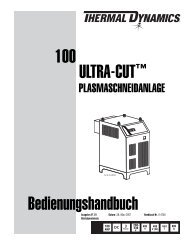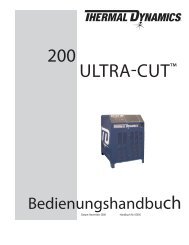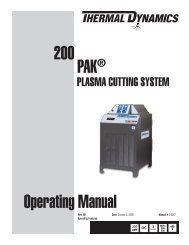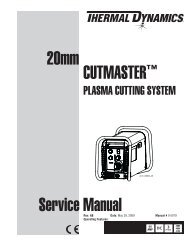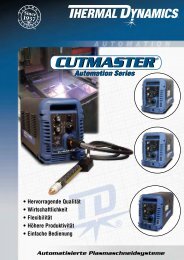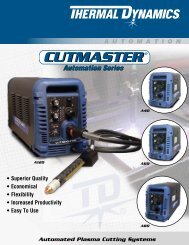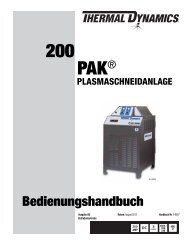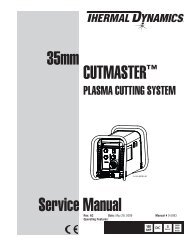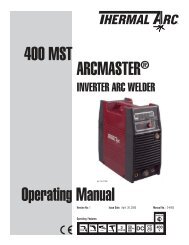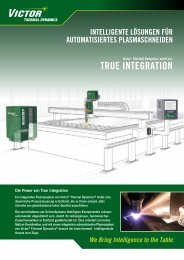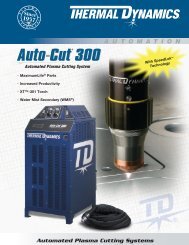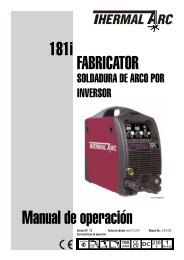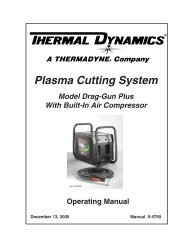211i Operating Manual FabricatOr® - Victor Technologies - Europe
211i Operating Manual FabricatOr® - Victor Technologies - Europe
211i Operating Manual FabricatOr® - Victor Technologies - Europe
You also want an ePaper? Increase the reach of your titles
YUMPU automatically turns print PDFs into web optimized ePapers that Google loves.
BASIC WELDING FABRICATOR <strong>211i</strong><br />
4.02 MIG (GMAW/FCAW) Welding Troubleshooting<br />
Solving Problems Beyond the Welding Terminals<br />
The general approach to fix Gas Metal Arc Welding (GMAW) problems is to start at the wire spool then<br />
work through to the MIG gun. There are two main areas where problems occur with GMAW, Porosity and<br />
Inconsistent wire feed<br />
Solving Problems Beyond the Welding Terminals - Porosity<br />
When there is a gas problem the result is usually porosity within the weld metal. Porosity always stems from<br />
some contaminant within the molten weld pool which is in the process of escaping during solidification of<br />
the molten metal. Contaminants range from no gas around the welding arc to dirt on the work piece surface.<br />
Porosity can be reduced by checking the following points.<br />
FAULT CAUSE<br />
1 Shielding gas cylinder contents<br />
and flow meter.<br />
Ensure that the shielding gas cylinder is not empty and the<br />
flow meter is correctly adjusted to 15 litres per minute.<br />
2 Gas leaks. Check for gas leaks between the regulator/cylinder connection<br />
and in the gas hose to the Power Source.<br />
3 Internal gas hose in the Power<br />
Source.<br />
Ensure the hose from the solenoid valve to the Euro adaptor<br />
has not fractured and that it is connected to the Euro adaptor.<br />
4 Welding in a windy environment. Shield the weld area from the wind or increase the gas flow.<br />
5 Welding dirty, oily, painted,<br />
oxidised or greasy plate.<br />
6 Distance between the MIG gun<br />
nozzle and the work piece.<br />
7 Maintain the MIG gun in good<br />
working order.<br />
Clean contaminates off the work piece.<br />
Keep the distance between the MIG gun nozzle and the work<br />
piece to a minimum.<br />
A Ensure that the gas holes are not blocked and gas is exiting<br />
out of the MIG gun nozzle.<br />
B Do not restrict gas flow by allowing spatter to build up inside<br />
the MIG gun nozzle.<br />
C Check that the MIG gun O-rings are not damaged.<br />
Table 4-2: Solving Problems beyond the Welding Terminals-Porosity<br />
! WARNING<br />
Disengage the feed roll when testing for gas flow by ear.<br />
<strong>Manual</strong> 0-5225 4-7 BASIC WELDING GUIDE



